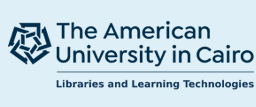Abstract
Pearl millet is one of the widely known and cultivated C4 monocot cereal crops in tropical and subtropical regions and is characterized by several intriguing characteristics that allow it to become comparable to some economically valued crops. Being highly nutritious, highly resilient to drought, and gluten-free, pearl millet is a notorious source of food in developing countries in Africa and Asia that sustains food security while also being used as fodder for livestock and birds. Despite the unique characteristics, there are limited ongoing research and breeding programs working on developing new millet varieties to cope with increasing food and feed demand worldwide and foreseen climate change challenges. This study aims to examine two different explants (immature inflorescences and immature zygotic embryos) to establish a successful in vitro regeneration system for an Egyptian variety of pearl millet. For immature inflorescences, it was found that MS media supplemented with 1 mg L-1 proline, 1 mg L-1 asparagine, 1 mg L-1 2,4-D, plus 0.5 mg L-1 BAP gave the best callus regeneration rate. The incorporation of L-proline and L-asparagine combination was found to be better than casein hydrolysate alone in enhancing the quality and regeneration potential of the produced callus. However, the addition of silver nitrate did not show any significant impact on vitrification rate or callus formation. As for the second explant (immature zygotic embryos), it was noted that MS media supplemented with 1 mg L-1 BAP plus 0.5 mg L-1 NAA resulted in the highest regeneration percentage for the callus formed. Transient expression of uidA resulted in blue spots after 48 and 72 hours after bombardment, confirming the suitability of the generated callus for receiving transgenes using a biolistic gene gun. Preliminary results to develop a stable transformation system for immature inflorescence-derived callus tissues using pAB6 construct harboring bar gene encoding for phosphinothricin (PPT) resistance and uidA encoding for gus resulted in the regeneration of a potential transgenic plant based on resistance to glufosinate. Successfully establishing regeneration and transformation systems for pearl millet will lay the foundation for modification of local varieties of pearl millet to become more resilient and further improve their quality.
Keywords: Pearl millet, Biotechnology, In vitro tissue culture, Biolistic transformation, Immature inflorescences, Immature zygotic embryos
School
School of Sciences and Engineering
Department
Biotechnology Program
Degree Name
MS in Biotechnology
Graduation Date
Winter 2-19-2025
Submission Date
1-27-2025
First Advisor
Walid Fouad
Second Advisor
Ashraf H. Fahmy
Committee Member 1
Ahmed Shawky
Committee Member 2
Ahmed Abdellatif
Extent
88 p.
Document Type
Master's Thesis
Institutional Review Board (IRB) Approval
Not necessary for this item
Recommended Citation
APA Citation
Mohamed, A. K.
(2025).Establishment of In Vitro Regeneration Systems for Pearl millet (Pennisetum Glaucum (L.) R. Br.) Using Different Explants [Master's Thesis, the American University in Cairo]. AUC Knowledge Fountain.
https://fount.aucegypt.edu/etds/2459
MLA Citation
Mohamed, Amira Khaled Hussein Ms. Establishment of In Vitro Regeneration Systems for Pearl millet (Pennisetum Glaucum (L.) R. Br.) Using Different Explants. 2025. American University in Cairo, Master's Thesis. AUC Knowledge Fountain.
https://fount.aucegypt.edu/etds/2459

